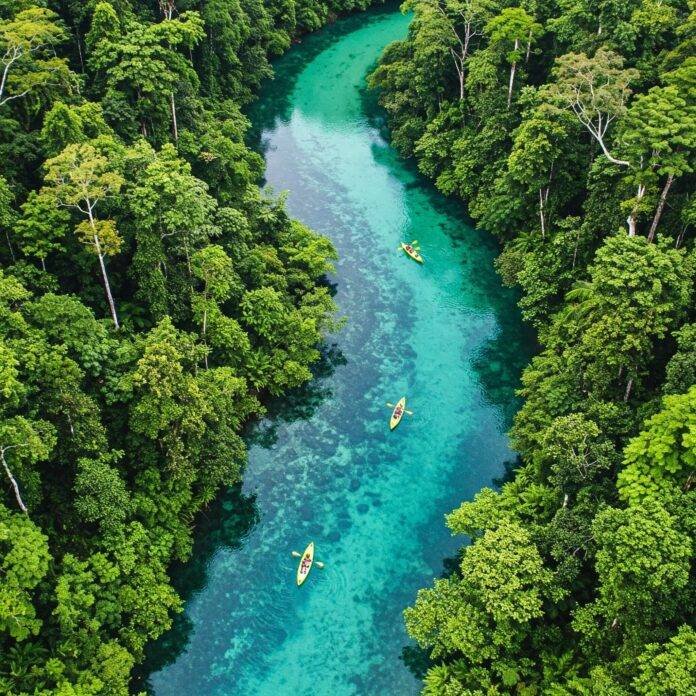Eco-tourism is more than just a buzzword—it’s a powerful way to explore the world while actively contributing to conservation. By choosing sustainable travel practices, you can help protect ecosystems, support local communities, and preserve natural wonders for future generations. In this guide, we’ll explore how you can contribute to conservation through eco-tourism, with practical tips and real-world examples to inspire your next adventure.

Why Contribute to Conservation Through Eco-Tourism
Eco-tourism conservation focuses on traveling in a way that minimizes environmental impact while supporting preservation efforts. Unlike traditional tourism, which can strain natural resources, eco-tourism prioritizes sustainability. According to the World Tourism Organization, sustainable tourism can reduce carbon footprints by up to 30% when travelers make conscious choices.
Benefits of Responsible Tourism Conservation
Responsible tourism conservation helps protect endangered species, restore habitats, and fund conservation projects. For example, in Costa Rica, eco-tourism initiatives have supported the recovery of sea turtle populations through volunteer programs and protected nesting sites.
- Preserves Biodiversity: Eco-tourism funds national parks and wildlife sanctuaries.
- Supports Local Economies: Sustainable travel directs revenue to communities, reducing reliance on harmful practices like deforestation.
- Raises Awareness: Travelers learn about conservation challenges and advocate for change.
How to Contribute to Conservation Through Eco-Tourism
Ready to make a difference? Here are actionable ways to ensure your travels support eco-tourism conservation.
1. Visit Destinations to Contribute to Conservation Through Eco-Tourism
Select destinations known for sustainable practices. Countries like Bhutan and New Zealand prioritize green tourism, with policies that protect natural resources. Research destinations through platforms like Sustainable Travel International to find conservation-focused spots.

2. Choose Eco-Lodges for Sustainable Travel Conservation
Stay at eco-lodges or hotels certified by organizations like Green Globe. These accommodations use renewable energy, reduce waste, and support local conservation projects. For instance, the Feynan Ecolodge in Jordan powers its operations with solar energy and funds community-led conservation.
- Look for Certifications: Check for LEED or Green Key certifications.
- Ask Questions: Inquire about the property’s sustainability practices before booking.
- Minimize Waste: Choose accommodations that avoid single-use plastics.
3. Join Activities to Contribute to Conservation Through Eco-Tourism
Participate in activities that directly support eco-tourism conservation. Volunteer programs, wildlife monitoring, and reforestation projects allow travelers to make a tangible impact. In Kenya, the Elephant Conservation Program invites tourists to assist with tracking elephant migrations, providing data for protection efforts.
4. Protect Wildlife for Green Tourism Conservation
Responsible tourism means observing wildlife from a distance and avoiding activities that exploit animals. Skip attractions like elephant rides or dolphin shows, which often prioritize profit over animal welfare. Instead, opt for ethical sanctuaries or guided tours led by conservationists.
- Follow Guidelines: Stick to marked trails to avoid disturbing ecosystems.
- Choose Ethical Tours: Book with operators certified by the Global Sustainable Tourism Council.
- Avoid Souvenirs from Endangered Species: Say no to products made from coral, ivory, or exotic animal skins.

5. Lower Your Carbon Footprint for Eco-Tourism Conservation
Traveling sustainably means minimizing your environmental impact. Choose low-carbon transportation options, like trains or electric buses, and offset your flights through programs like Carbonfund.org. Packing light and using reusable items, such as water bottles and cloth bags, also reduces waste.
Examples of Eco-Tourism Conservation in Action
Eco-tourism has led to remarkable conservation successes worldwide. In Rwanda, gorilla trekking tours generate funds for Volcanoes National Park, helping protect endangered mountain gorillas. Similarly, Australia’s Great Barrier Reef Marine Park uses eco-tourism revenue to combat coral bleaching and promote marine health.
Galápagos Islands: A Model for Sustainable Travel Conservation
The Galápagos Islands, a UNESCO World Heritage Site, enforce strict eco-tourism regulations to protect their unique biodiversity. Tourists must follow guided tours, and visitor numbers are capped to reduce environmental strain. Revenue from park fees supports research and habitat restoration, proving how sustainable travel conservation can thrive.
Key Steps to Contribute to Conservation Through Eco-Tourism
To make your next trip a win for conservation, follow these steps:
- Plan Ahead: Research eco-friendly destinations and accommodations.
- Book Responsibly: Choose tour operators and hotels with sustainability certifications.
- Engage Locally: Support local artisans and conservation projects.
- Travel Light: Reduce waste and carbon emissions with mindful packing.
- Spread the Word: Share your eco-tourism experiences to inspire others.
Conclusion
Contributing to conservation through eco-tourism is a rewarding way to explore the world while making a positive impact. By choosing sustainable destinations, supporting eco-friendly accommodations, and engaging in conservation activities, you can help protect our planet’s precious ecosystems. Start small, travel responsibly, and inspire others to join the movement for eco-tourism conservation.
Ready to plan your next eco-adventure? Share your favorite sustainable travel tips in the comments below!
Outbound Link: Contribute to Conservation Through Eco-Tourism Tips





































